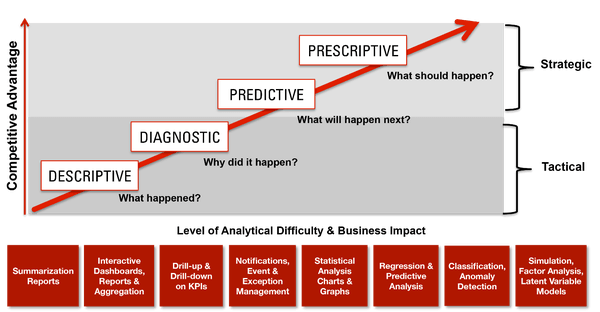No one has yet to build a time machine to take us 15 years (or even 60 seconds) into the future. It stands to reason that some companies may see predictive analytics as something of science fiction. However, organizations have been putting this to use for the past few years, and it’s gaining in popularity.
What things fall into the realm of predictive analytics?
- Customer lifetime value
- Next best offer or product recommendation
- Quarterly sales forecasts
- Digital ad placement or re-targeting campaigns
In the latest #AdobeChat, the conversation focused on predictive analytics. Here are the key takeaways from the discussion whether you’re just dipping your toe in the water or you’re ready to dive in:
How would you describe predictive analytics?
The answers vary but was primarily defined as using data to:
- Understand consumer/market behavior
- Move the needle from reactive to proactive
- Advise sales what to do next based on what was successful in the past
- Predict the next action consumers are likely to take
What are other applications for predictive analytics besides customer behavior?
- Determining customer lifetime value
- Content personalization
- Customer segmentation
- Improve A/B testing of content and campaigns
- Risk modeling
- Optimizing marketing spend
- Improving digital customer experience (CX)
What is the difference between predictive, descriptive & prescriptive analytics?
Most answers summarized the difference between past, present and future. Case in point, @Perficient’s POV on the subject:
- Descriptive = What happened?
- Predictive = What will happen next?
- Prescriptive = What should happen?

Source: Perficient
What best practices should be followed when applying predictive analytics?
- Set clear goals
- Define specific objectives
- Confirm reliable data sets exist
- Develop processes and standardize tools
- Establish benchmarks
When you can successfully predict customer behavior, how will that impact your business?
- More relevancy & better personalization which results in improved engagement and customer experience
- Remove the guesswork from decision making
- Optimize marketing/business spend, product take rates, and plan for the unexpected
However, if you don’t act on the insights, then predictive analytics means zilch as far as monetizing the opportunities.
What is the biggest barrier to adoption of predictive analytics?
- Lacking the right (or reliable) data, people who don’t understand how to apply it, and limited budgets and ROI models
- Cultural & perceived barriers, such as “it’s too expensive,” “we don’t have the right data,” “we don’t know how to use it,” and/or “we don’t need it”
- Lack of talent to build a working predictive analytics practice – with the need for a skilled team, not just one person
How do we merge predictive and cognitive analytics into overall strategy?
- Start small – get the data in one place & give the right people access to it
- Find the right technology and tools for your business
- Watch for emerging innovations as predictive & cognitive analytics evolve

Source: Perficient
Check out the weekly #AdobeChat every Wednesday at (4 p.m. ET/ 1 p.m. PT). This week, find out what the future of digital marketing holds for us!
Digital has redefined #marketing. What will the future bring? Join #AdobeChat this week to discuss. pic.twitter.com/shzblSas6C
— Marketing Cloud (@AdobeMktgCloud) September 19, 2016
